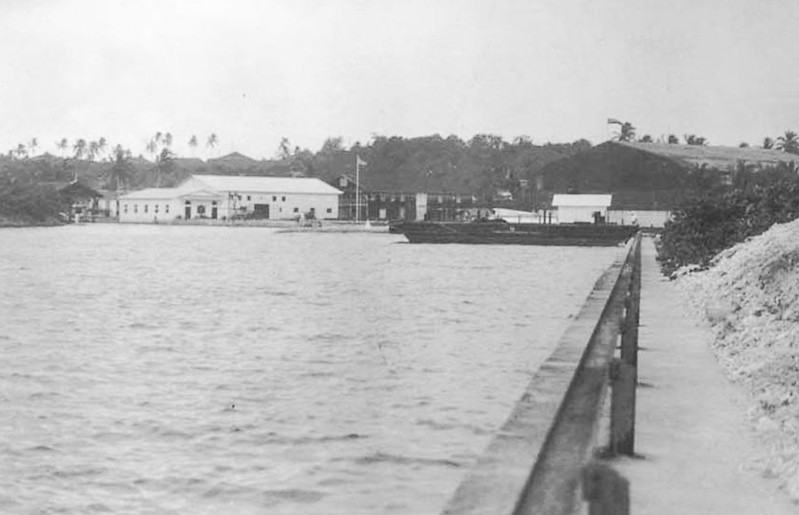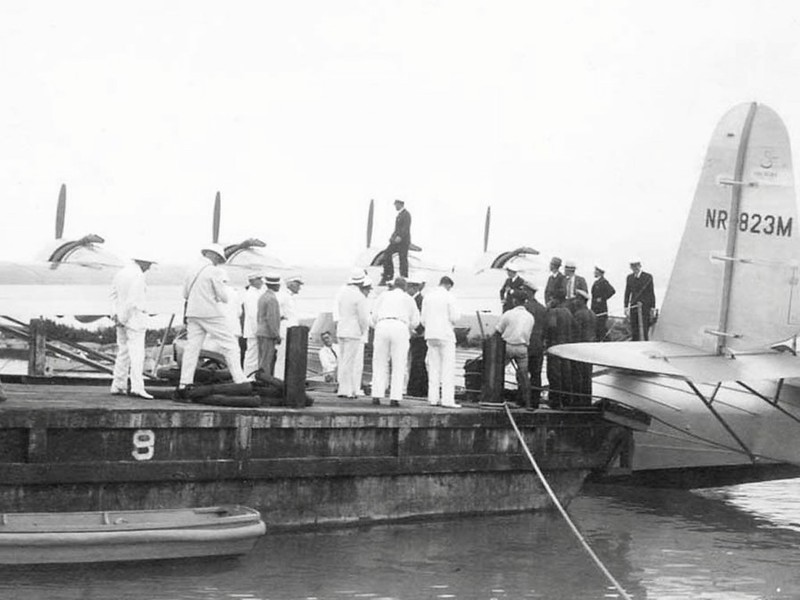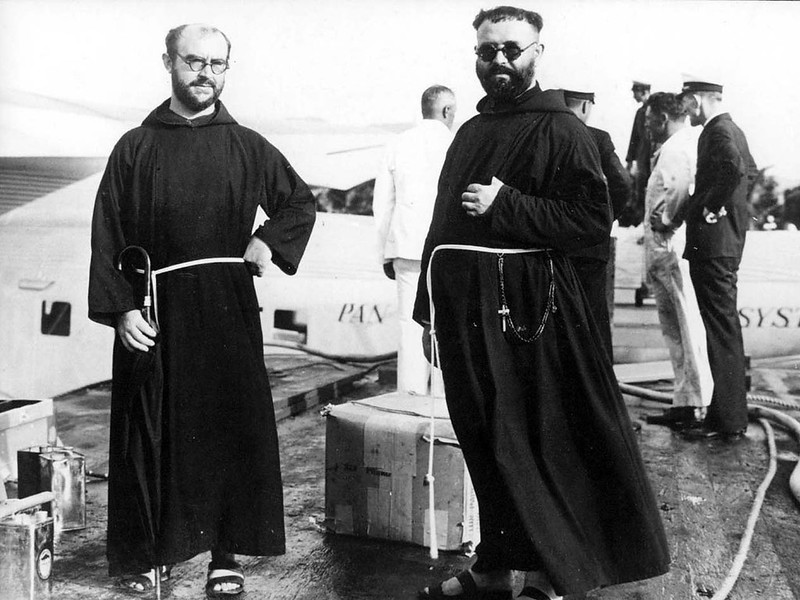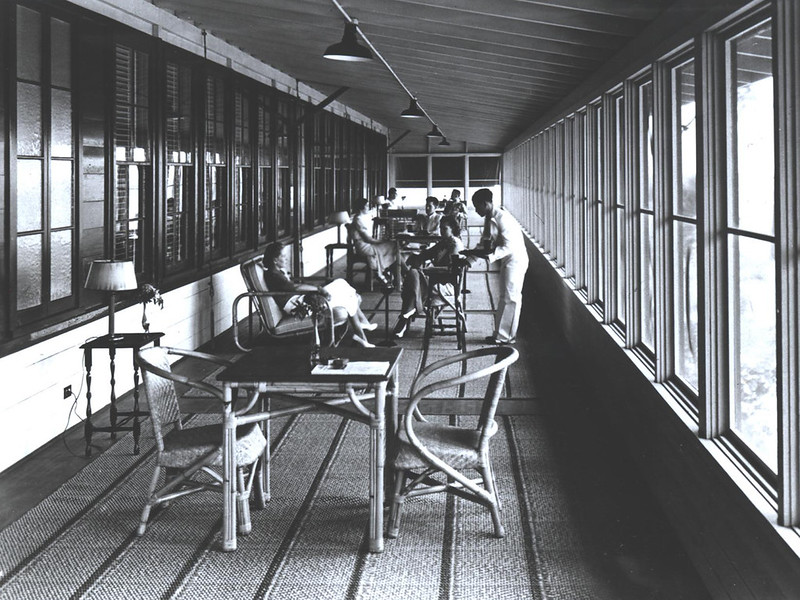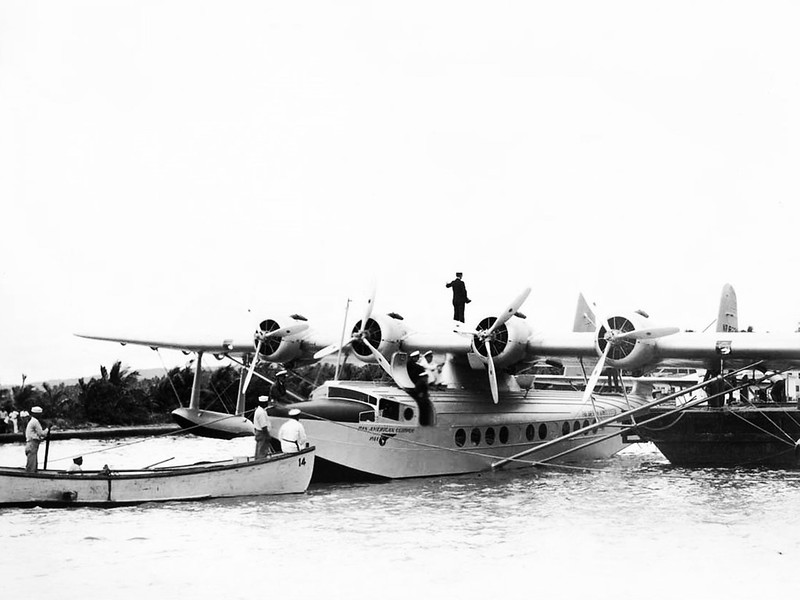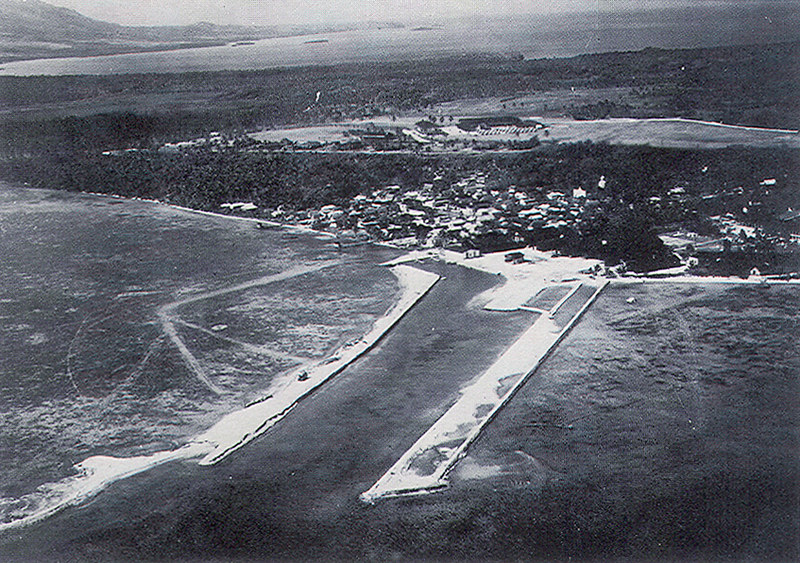First to make trans-Pacific flights
Pan Am Clippers was the name given to the Pan American fleet of airplanes that were used in the first commercial passenger and mail flights across the Pacific. During the early years, these were seaplanes that could land on the calm lagoons of the Pacific Islands.
These planes were cutting edge technology for the times. In fact, in 1932 when a trans-Pacific route was first proposed, no plane was capable of making the flight. Both the Sikorsky Company and G.L. Martin Company submitted bids to develop planes for the 8,746 mile route. The results were the S-42 and the M-130, both of which were used in the first years of the trans-Pacific route.
Many different sea planes were used by Pan Am during the pre-World War II era, the last being the Boeing 314. Planes could not make the trip directly at that time so facilities had to be developed at various islands along the route. For the Honolulu-to-Manila route, stops were made at the Pacific islands of Midway, Wake and Sumay, Guam. The development of the necessary infrastructure on each island was a considerable undertaking. In early 1935, the steamship North Haven was loaded up with enough supplies to build two villages, five airbases, 250,000 gallons of fuel, 44 airline technicians, food and everything else to sustain the new airbases on these isolated islands.
China Clipper- Beginning of a new era
The first mail plane, an M-130 known as the “China Clipper,” took off from San Francisco on 22 November 1935. At an average speed of 115 miles per hour, and after stops in Hawai’i, Midway and Wake it arrived at Sumay, Guam at 3:05 pm on 27 November 1935. The total flight time for the trip, which ended in Manila, was 59 hours and 48 minutes.
Perhaps most famous out of the first crew who flew this route was Fred Noonan the navigator, who would later disappear somewhere in the Pacific with Amelia Earhart in 1937.
For Guam, 27 November 1935, marked the beginning of a new era of greater interconnectedness between Guam and the rest of the world. Passenger service began 11 months later on 21 October 1936.
These historic flights put Guam on the map for many Americans. This was particularly true for the wealthy and celebrities, including Ernest Hemingway, who traveled across the Pacific and stopped at Guam on their way to Asia. Commencement of airline service in Guam in 1935 was a significant event and a tremendous advancement in global transportation. Air transportation to such places as Manila, Honolulu, San Francisco and Tokyo was provided on a weekly basis. Previously, it took a month or two by ship for the delivery of services to these places.
The basic pattern for these flights was to fly all day and land in time for dinner and cocktails at the Pan Am Hotels that were constructed at each of the stops. In Guam, the Pam Am Hotel became a popular gathering place for the island’s business and political leaders. Here island leaders would mingle with guests who were passing through.
Pan Am was an important economic engine that helped increase the importance of Sumay during the late 1930s. It also provided jobs for Chamorros both on the island and in other Pan Am facilities.
Ushered in tourism industry
Drastic changes came to the island on morning of 8 December 1941 when the Pan Am base in Sumay was bombed and machine gunned by Japanese planes at the start of World War II in the Pacific. This destroyed the Pan Am Hotel, crew quarters and fuel tanks and killed two employees.
Clipper operations were revived after the war, but the era of the seaplane was over. Beginning 21 October 1946, the first Pan Am DC-4 landed on the tarmac of the new Naval Air Station in Tiyan, Barrigada. A World War II Quonset hut was converted to a hotel and galley at Tiyan. Another Quonset hut served as the Guam Air Terminal until 1968.
Pan Am was a part of two other historic occasions for Guam during the early post-war era. On 1 July 1960, Guam entered the jet era, with the arrival of a Pan Am Boeing 707. Then on May 9-12, 1967, Pan Am launched the first direct round-trip Guam-Tokyo route, ushering in the present-day tourism industry.
For further reading
Pan American World Airways, Inc. 20 Years of Progress: History of the Pacific-Alaska Division, Pan American World Airways. New York: PAD Public Relations Department, 1955.
The New York Times. “The 30th Anniversary of the First China Clipper.” November 21, 1965.
Williams, Dick. “The Flying Boat that Made History.” The Sunday News, 24 November 1974.
Williams, R. “Flying Boats to 747s: 45 Years of Pan Am Aircraft History.” Pacific Daily News, 27 November 1980.

